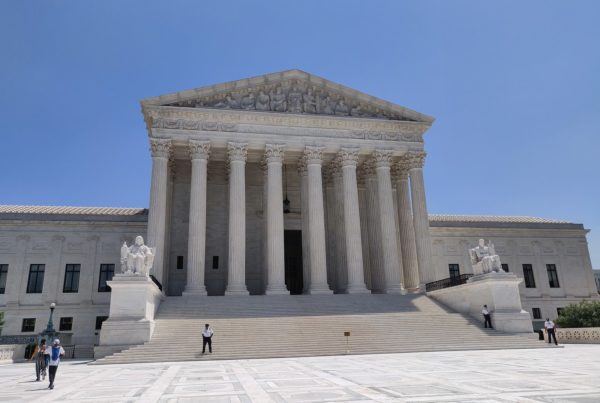If there’s one thing that both Republican and Democratic parties have agreed on for years, it’s that the U.S. immigration system is broken and needs to be “fixed.” For decades, each administration has tried to make such fixes, and it’s had an effect on where we are today.
Elizabeth Trovall wrote about this for the Houston Chronicle. She connected the dots in her conversation with the Texas Standard. Listen to the story above or read the transcript below.
This transcript has been edited lightly for clarity:
Texas Standard: Border officials, you write, have tracked 2.3 million people crossing the southwest border in 2022. And as you note, this is in the footsteps of the millions of migrants who have crossed before them for a variety of reasons. You wanted to look into this because of what the Biden administration recently announced – a rather unpopular plan to both sides. Tell us a little bit about what it is the Biden administration’s trying to do.
Elizabeth Trovall: Well, it’s truly a moderate plan because he’s continuing, in some ways, Trump’s approach to bypassing credible fear interviews – in some ways expanding Title 42, which makes it much harder for some folks to get asylum. But on the other hand, he’s allowing migrants to actually get sponsors and apply to get in the U.S. proactively while they’re still in their home countries. He also set up a Customs and Border Protection app, though some folks can get an appointment to seek asylum at ports of entry.
You went back and took a look at how various administrations have gotten to this point. And you went back to the Reagan years. What was it about how the Reagan administration handled this and subsequent administrations, too?
So President Reagan was, you know, it was under him that the major reform was passed – which created amnesty for people who are undocumented in the United States. If they were law-abiding folks in the country, they were able to apply and become citizens, which make up actually a great deal of the citizens we see in the state of Texas who came from Mexico, especially. But on the other hand, that bill also made it more difficult for folks to hire undocumented immigrants. But there was this little catch in the bill that said “knowingly hire undocumented immigrants.” And so there’s a bit of a loophole there. And so employers were able to basically be like, “well, I can’t be certain I’m hiring somebody who’s undocumented because they’re giving me these papers and it’s not my responsibility to decide whether or not they’re legitimate.”
Fast forward to Bill Clinton, 1996. You mentioned the credible fear law, which informs what was part of what Biden’s plan involves here. The credible fear has to do with those seeking asylum, correct?
That’s right. So it was under the Clinton administration that we went from thousands seeking asylum to hundreds of thousands of folks. So a bill passed that made it easier to quickly deport people. But it also added this credible fear interview into the process. So if somebody came up and said, “I fear persecution or torture back in my home country,” they were able to stay and wait until they could see an immigration judge. And then that immigration judge would decide whether or not they had an asylum case.
You can fast forward then to the Trump administration. And again, he wants to get beyond the credible fear interviews. He starts to make people wait for their immigration cases in Mexico, correct?
Right. So having these credible fear interviews created a system where there was this growing asylum backlog for those immigration cases to be heard. And so folks went from maybe waiting a month or two months for their cases to years. And I think the phrase “catch and release” may be familiar to folks. You know, that’s what Trump rerered this asylum policy as, the credible fear interview as. So he wanted to stop that. He wanted people to wait for their cases in Mexico. And then the pandemic comes along and the health code is just this perfect excuse to return people to their home countries. No credible fear interview required.
Looking back over these various administration’s policies, what’s the takeaway for you?
So we have these international treaties and laws that protect people fleeing persecution. But really, at the end of the day, it’s numbers that drive the politics and the policies at the border. So when the U.S. had 2.3 million border crossings in 2022, a record number, it did cause actual disorder. And that disorder has had costs on border communities and it’s strained the immigration system like never before. And now we have to see how Biden addresses all that.















